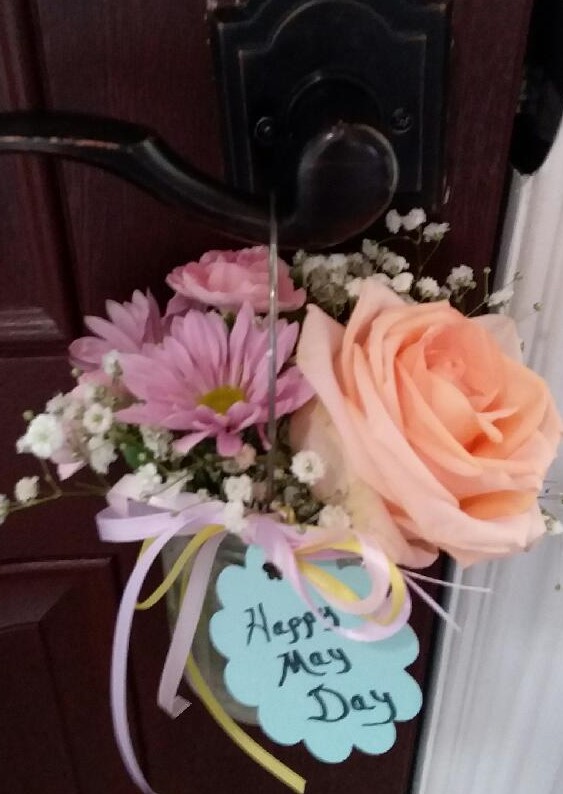Before socialists, communists, anarchists, labor activitists and leftists took May 1 to commemorate their struggles, it was widely celebrated by the masses. In some regions, it was considered a public holiday that included dancing, singing and yum—cake.

In an attempt to bring back the traditional May Day, if only on a small scale, I gathered up my three small children, arranged a little basket with flowers, placed it on my parents’ front doorknob, rang the bell and we all ran away. My mom didn’t catch us, but she knew me well enough to figure out who left the flowers. What prompted my impetuous celebration? Mom always talked about how fun it was to make and leave baskets on neighbor’s porches when she was a little girl. Really, it is a lovely tradition, sadly abandoned.
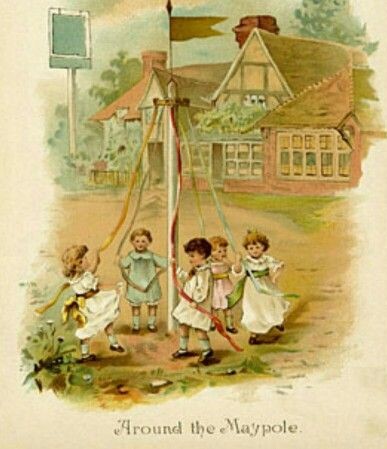
Personally, I have never danced around a Maypole. I found this old picture (below) in my Great Aunt Ruth’s photo album. I believe this was taken at a school in Montana where she grew up. If she’s one of the children in the photo, I don’t know which one. Unfortunately, another picture was glued on top. From experience, it’s better to leave it there than try to remove it. The boys also remain unidentified.
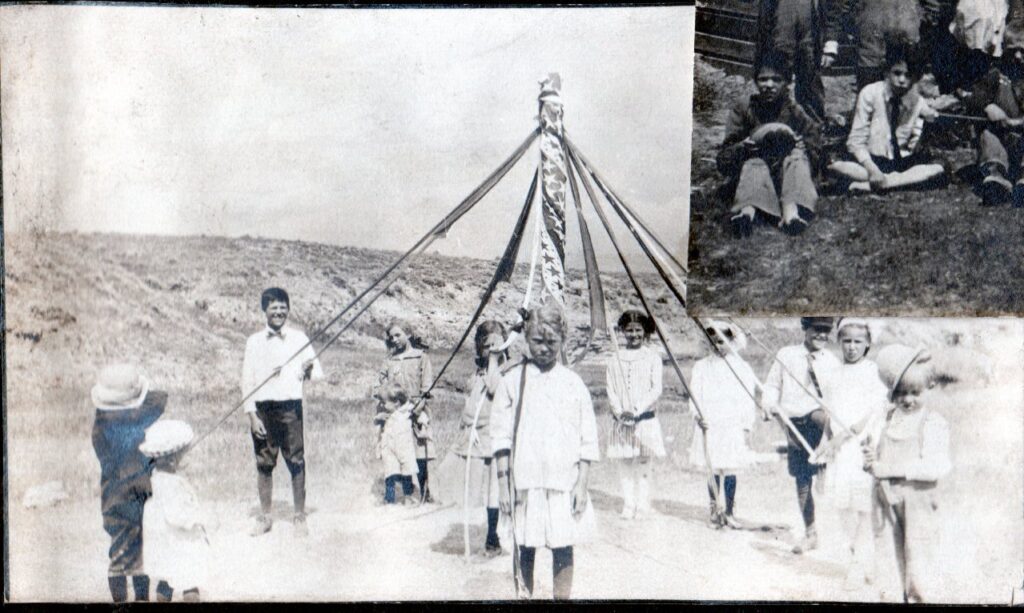
True, many of these children don’t look to be having the best time, especially the girl in front. Some in back appear happy enough. It seems as if that tall boy might be laughing at our unhappy friend. Hmm, her scowl looks oddly familiar. Could expressions be hereditary?
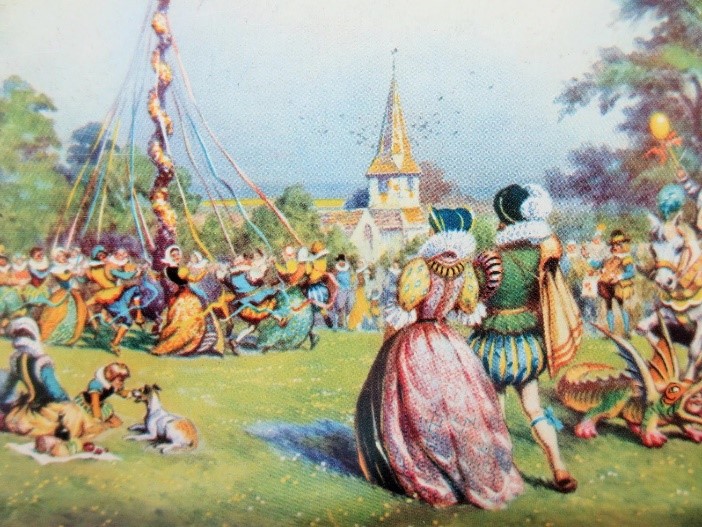
In the Middle Ages, every village had a Maypole. May Day is rooted in astronomy, thought to be the midpoint between the four solstices and equinoxes of the year. It was actually considered the first day of summer and the first day of the year when people went barefoot. Different cultures throughout history have celebrated by lighting bonfires, decorating homes and livestock with yellow flowers and nighttime dances. Many gathered wildflowers to weave into hair garlands. Another tradition was the crowning of a May king and queen.
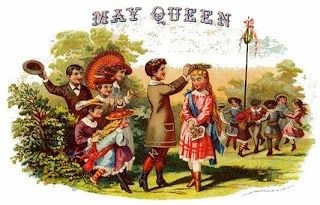
The idea of a June wedding actually begins with May Day. If a young man and woman paired up by sundown, their courtship might continue and the couple would marry six weeks later on June’s Midsummer’s Day.
Although May Day customs were popular in America from the 1800s through the first half of the 1900s, they never became a real part of American culture like many other European traditions. One reason might be that New England Puritans considered May Day to be licentious and pagan and forbade its celebration, quashing early enthusiasm. Then again, when Mother’s Day became a national holiday, perhaps it edged out the more modest May Day celebrations.
As for May baskets, the official custom was to knock on the door yelling “May basket!” and run away. Should the recipient catch the giver, they were entitled to a kiss.
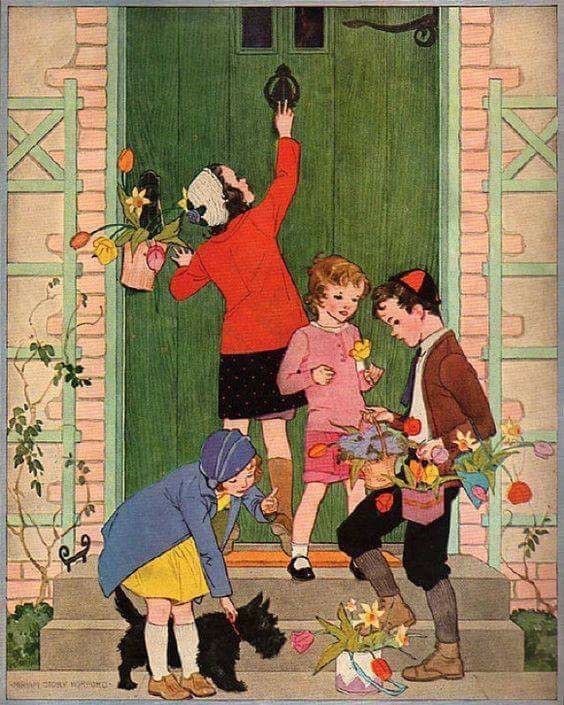
It might be nice to rekindle this sweet tradition. Half the fun is making and decorating a homemade basket out of construction paper or a milk carton, then filling it with traditional flowers or baked goods, candy, small trinkets, even seed packets. You’ll be set to surprise a neighbor, friend, relation or perhaps a sweetheart. Little acts of kindness are always appreciated.
